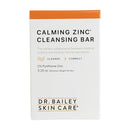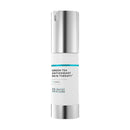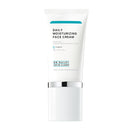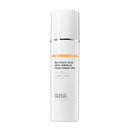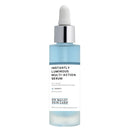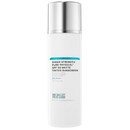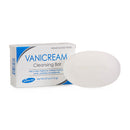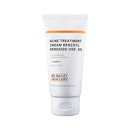Treatment for facial seborrheic dermatitis

You might assume the flaky skin on your face is just dryness, but it’s probably facial seborrheic dermatitis. It usually affects the oiliest parts of your face, and it’s very common. Almost every day, I advise patients on treatment for seborrhea. So, here’s what causes this annoying condition and how you can remedy it.
Facial Seborrheic Dermatitis
- Did you know that facial seborrheic dermatitis is common?
- What parts of the face get seborrheic dermatitis?
- How is facial dandruff different from dry skin?
- Facial seborrheic dermatitis treatment tips.
Did you know that facial seborrheic dermatitis is common?
Most of us will have facial dandruff at some point in our lives. It usually appears in the winter, although it can develop at any time of the year.
Who can get it?
This condition normally affects people from puberty onwards. Babies can also get it, especially around their eyes and nose.
What parts of the face get seborrheic dermatitis?
 Facial dandruff often starts as dry white flakes in the eyebrows and may spread to the skin between your brows. Around the nose, you may develop itchy red skin with a greasy scale. This often progresses down the crease running along the sides of your lips to your chin. Your skin may also have a dry scaliness on your nose and cheeks.
Facial dandruff often starts as dry white flakes in the eyebrows and may spread to the skin between your brows. Around the nose, you may develop itchy red skin with a greasy scale. This often progresses down the crease running along the sides of your lips to your chin. Your skin may also have a dry scaliness on your nose and cheeks.
Untreated seborrhea is hard to cover up. It may look better in the morning after you've washed your face, but as the day wears on, the scale builds up again.
How is facial dandruff different from dry skin?

Facial dandruff is caused by excess oil, whereas dry skin tends to be caused by dry weather, harsh soaps, hot water and other factors.
If you have areas of greasy, red flakiness it’s more likely to be facial dandruff than dry skin. Although the condition looks similar to dry skin, it’s really a rash.
What causes seborrheic dermatitis?
We’re not completely sure what causes facial dandruff. The yeast, Malassezia ovalis (Pityrosporum) has been linked to the condition.
The redness of seborrhea gets worse if you use any irritating skin care products like harsh soaps or anti-aging products with glycolic acid, vitamin C or Retin A.
Trying to cover up the problem with make-up also doesn’t help because make-up gets stuck in the scales.
Facial seborrheic dermatitis treatment tips
Over my years of dermatology practice, I've found the best practical remedies. I’m susceptible to this annoying rash myself, so I've tried many products on my skin to discover what works best.
I created my Dermatologist's Facial Flaking and Redness Solution Kit to help control facial seborrheic dermatitis.
I've found that by making simple changes to your skin care you can have a complexion that is healthy and clean. The products in this kit will help you control the facial scale and redness of seborrheic dermatitis.
The kit contains 3 key products for controlling facial seborrheic dermatitis:
- Calming Zinc Soap. The soap you use is important. Calming Zinc helps fight seborrhea because it is not too drying for facial skin and it is fortefied with pyrithione zinc to fight the Malassezia yeast.
- Green Tea Antioxidant Skin Therapy. This product helps to reduce facial redness.
- Daily Face Cream. You need to moisturize your skin so it can heal - dry skin won't heal quickly. My Daily Face Cream is perfect because it hydrates without any irritating ingredients.
My seborrhea patients follow this skin care routine, and it’s the routine I follow myself. If a patient uses prescription creams, they are applied after the Green Tea and before the Daily Face Cream. Of course, this is at the discretion of the treating physician.
Please read Treatment for Seborrheic Dermatitis (Dandruff) for more about this condition, and further skin care tips.


